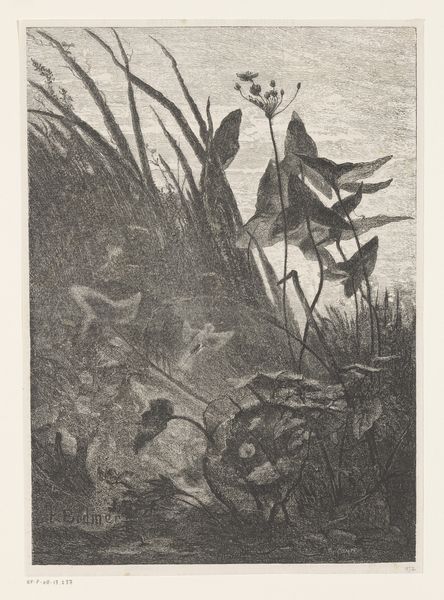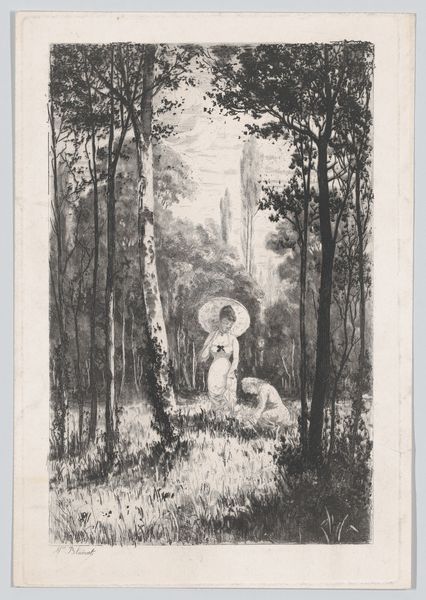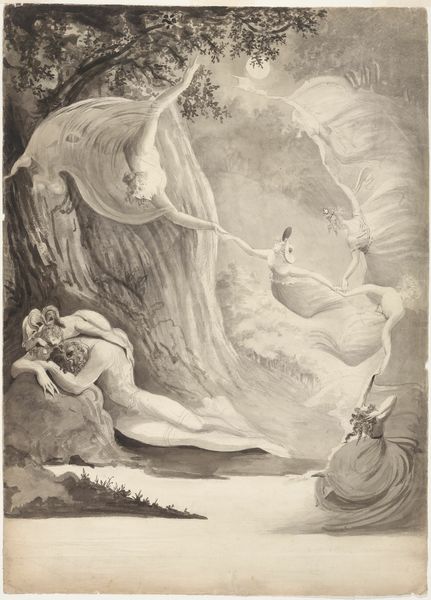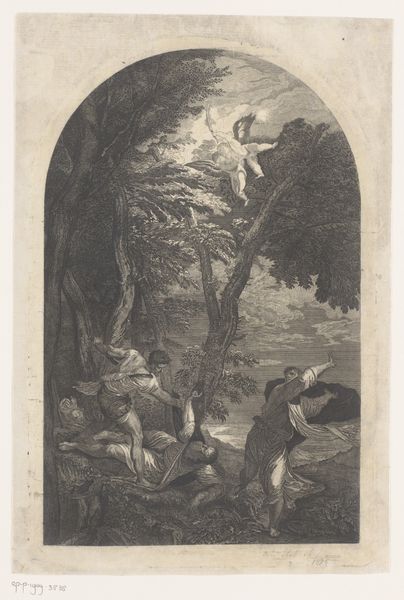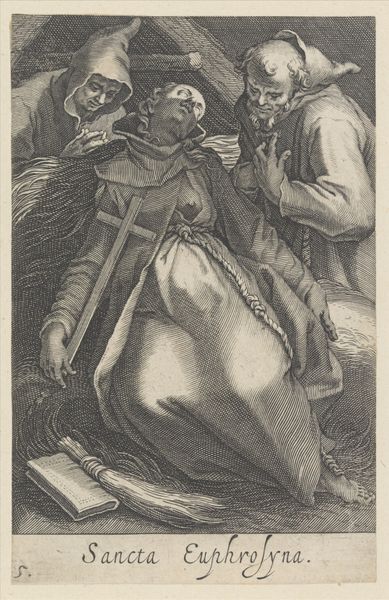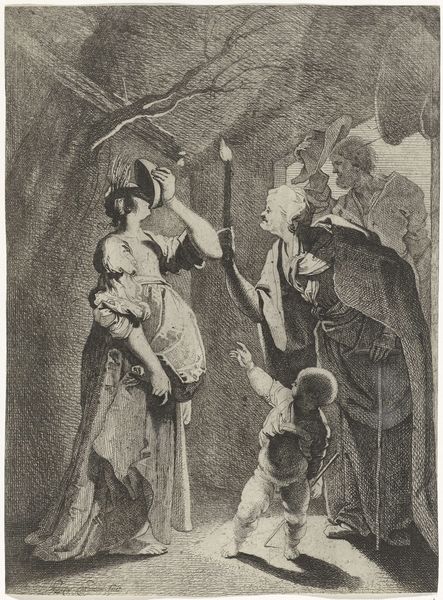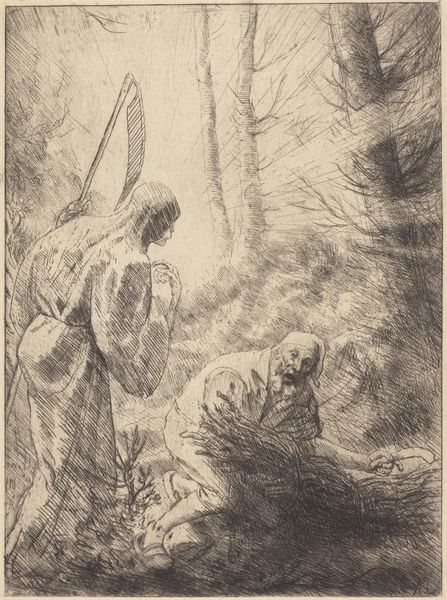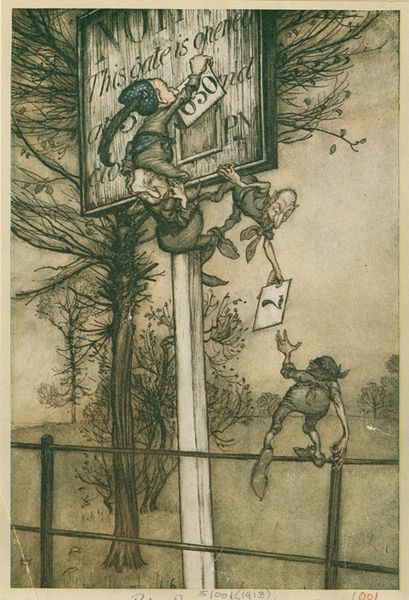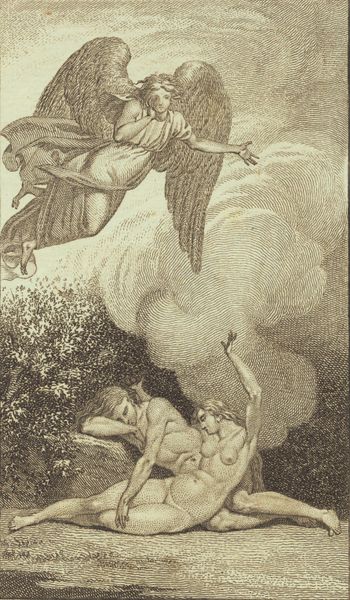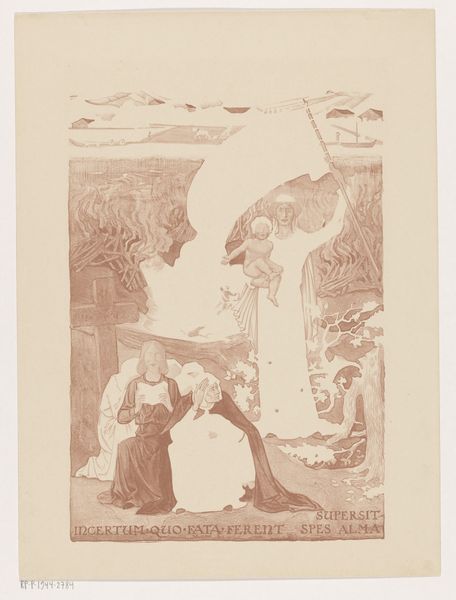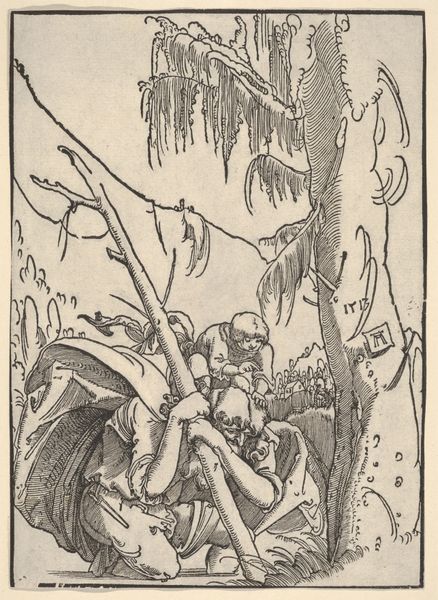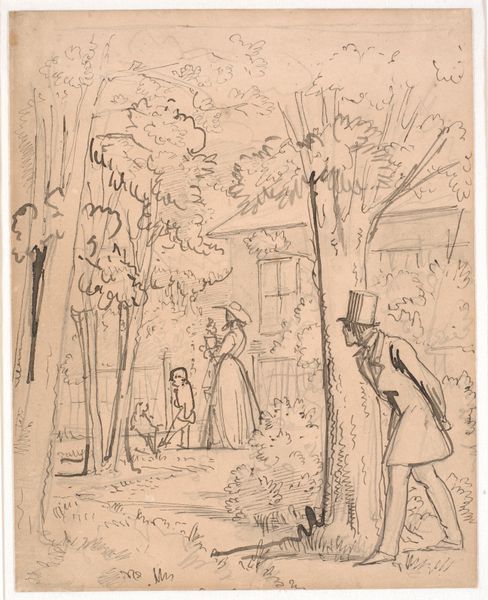
drawing, paper, watercolor, ink
#
drawing
#
pencil sketch
#
landscape
#
fantasy-art
#
charcoal drawing
#
figuration
#
paper
#
watercolor
#
ink
#
orientalism
#
watercolour illustration
Dimensions: height 310 mm, width 199 mm
Copyright: Rijks Museum: Open Domain
Curator: Here we have H.C. Louwerse’s "Lange man met baard kijkt neer op een zittende jongen," which translates to “Tall man with beard looks down on a sitting boy," created before 1910, primarily using ink, watercolor, and drawing techniques on paper. Editor: The scene is quite stark, immediately evocative of fairy tales with slightly unsettling overtones. There's an almost monochromatic palette that emphasizes the sharp contrast between the towering figure and the supplicant. Curator: Indeed. The visual elements speak volumes. Observe the economical use of ink and watercolor washes to depict a narrative tableau—the orientalist style nodding to broader cultural fascinations of the time. Considering that the man with the beard is holding swords and a scimitar it reminds one of works depicting genies. The labor of representation is understated, but powerful. Editor: I’m drawn to the gesture of the boy reaching up; it implies dependence or reverence. This immediately makes me wonder what sort of archetypes are being presented. Is the artist invoking a dynamic between a wise elder and a youth seeking knowledge, or something more charged like subjugation and power? Curator: That dynamic you mention reflects socio-political realities in an oblique manner. We have to remember, depictions of the “Orient” in art often coincided with colonial expansion. What appears to be a fantasy sketch engages with real-world power structures. Note the choice of inexpensive paper –likely an economic choice affecting production, perhaps inviting accessibility. Editor: That's a fascinating point. The wiseman, the boy, the landscape. I notice symbols related to destiny and fate woven throughout such visual language, making the scene all the more resonant for the time. Are there any indications about the circulation of images of this kind that might tell us how audiences might receive these tropes? Curator: Research reveals a possible distribution as illustrations within magazines and journals; contributing to a specific market of illustrated content and influencing cultural perceptions through mass reproduction and dissemination of those narratives. The question becomes, who benefits and profits from their reproduction, and to what end. Editor: So much can be found from something seemingly simple like materials used. Food for thought, definitely adding layers to one's understanding beyond surface aesthetic. Curator: Precisely! Analyzing materiality helps unlock wider networks of meaning and historical contexts.
Comments
No comments
Be the first to comment and join the conversation on the ultimate creative platform.
